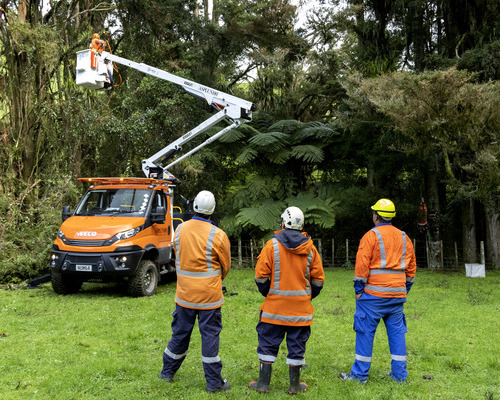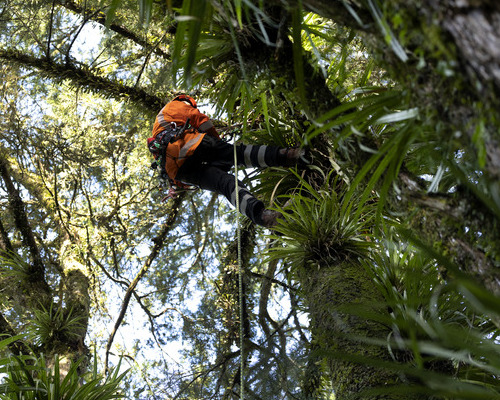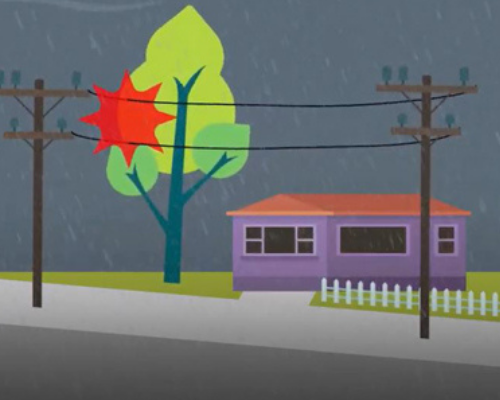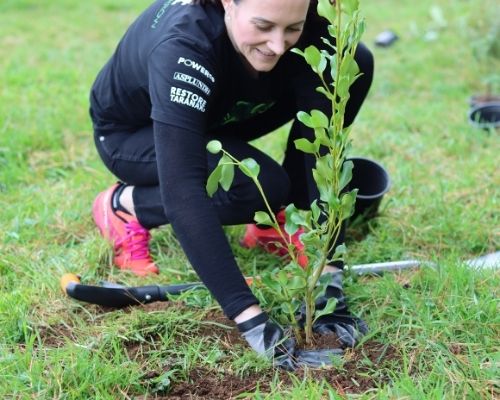Managing trees near lines more efficiently
From 1 April 2022 to 31 March 2023, we worked with our contractors to clear vegetation from 16,677 sites across our network – exceeding our plan to manage 8,921 tree sites by 87%.
Continuing to use more efficient ways of clearing vegetation around our overhead lines and other electricity assets, which we introduced in FY22, helped us achieve these accelerated results.
Shelter trimming has been particularly effective for controlling vegetation in the past year. Rather than arborists working alongside the road, trimming trees from cherry pickers, our contractors have been using tractors mounted with blades to trim vegetation growing adjacent to lines. While such work often requires a planned outage for customers, it’s a more effective and quicker way of dealing to problem trees.
We use our LiDAR information to identify areas where we need to trim vegetation.
Trees in lines are known to cause one-in-four power cuts on our network because, when overgrown, trees can interfere with power lines, cause outages and make it difficult for our crews to restore power.
Vegetation damage during storms
Despite our best efforts, trees continue to cause power outages during storm events – and the 2022-2023 financial year was particularly bad for high wind events, culminating with Cyclone Gabrielle in February 2023. High winds, combined with sodden soil, resulted in trees that may be a distance from lines, being uprooted and blown into them. In a similar situation, large trees, that would normally be outside the minimum safe distance from overhead lines under the Electricity (Hazards from Trees) Regulations, fall a distance onto lines.
Continual improvement
We are continually reviewing the way we manage vegetation around our lines, making improvements to help keep the lights on for our customers. As well as cyclical cutting beneath our lines, using information from our LiDAR, we are also working with and helping educate property owners, such as those with forestry plantations, around their obligations near our lines.
In the coming year, we’re also looking to trial other new technology.
-
 Project update
Project updateMonday, July 04, 2022 From 1 April 2020 – 31 March 2021 we managed a record 14,389 tree sites, a 30% increase on the year before.View more Project update
Project updateAchieving efficiencies in the way we manage vegetation
Monday, July 04, 2022 In 2021 we introduced new, more efficient ways of clearing vegetation from around our overhead lines and other electricity assets.View more Project update
Project updateNational campaign urges people to trim trees
Tuesday, May 18, 2021 We've joined forces with the Electricity Networks Association to highlight the importance of trimming trees.View more Project update
Project updateReplant for Tomorrow
Monday, July 13, 2020 We've partnered with Wild for Taranaki and Asplundh to plant 2,500 native trees.View more
